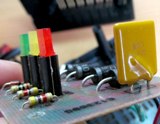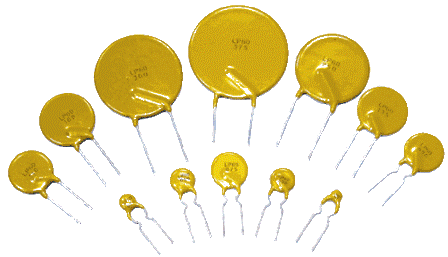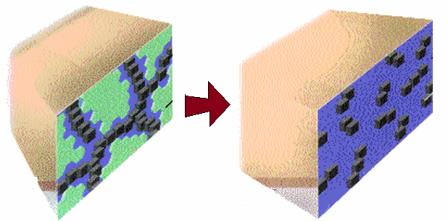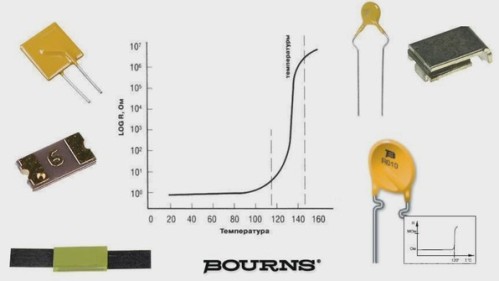Self-healing fuses
 The principle of operation of a conventional fuse is based on the thermal effect of an electric current. A thin copper wire is placed inside a ceramic or glass bulb, which burns when the current passing through it suddenly exceeds a certain predetermined value. This leads to the need to replace such a fuse with a new one.
The principle of operation of a conventional fuse is based on the thermal effect of an electric current. A thin copper wire is placed inside a ceramic or glass bulb, which burns when the current passing through it suddenly exceeds a certain predetermined value. This leads to the need to replace such a fuse with a new one.
Self-regulating fuses, unlike conventional fuses, can be triggered and reset multiple times. These self-aligning fuses are often used in computers and game consoles to protect USB and HDMI ports, as well as to protect batteries in portable equipment.

The conclusion is the following. A non-conductive crystalline polymer contains the smallest particles of carbon carbon introduced into it, which are distributed throughout the volume of the polymer, so that they freely conduct electric current. A thin plastic sheet is covered with current-carrying electrodes that distribute the energy over the entire area of the element. The terminals are attached to the electrodes, which serve to connect the element to the electrical circuit.

A characteristic feature of such conductive plastic is the high non-linearity of the positive temperature coefficient of resistance (TCR), which serves to protect the circuit. Once the current exceeds a certain value, the element heats up and the resistance of the conductive plastic will increase sharply and this will cause the circuit where the element is connected to break.
Exceeding the temperature threshold leads to the transformation of the crystalline structure of the polymer into an amorphous one, and the chains of soot through which the current passes are now destroyed — the resistance of the element increases sharply.

Let's look at the main characteristics of self-resetting fuses.
1. Maximum operating voltage - the voltage that the fuse can withstand without breaking, provided that the rated current flows through it. Typically, this value ranges from 6 to 600 volts.
2. The maximum non-trip current, the rated current of the self-recovery fuse. This usually happens from 50mA to 40A.
3. Minimum operating current — the value of the current at which the conductive state becomes non-conductive, i.e. current value at which the circuit opens.
4. Maximum and minimum resistance. Resistance in working condition. It is recommended to choose the element with the lowest value of this parameter from the available ones, so that excess power is not wasted on it.
5. Operating temperature (typically from -400 C to +850 C).
6. The reaction temperature, or in other words — the "turn-on" temperature (usually from +1250 C and more).
7. Maximum permissible current — maximum short circuit current at a nominal stress that the element can withstand without failure. If this current is exceeded, the fuse will simply blow. Usually this value is measured in tens of amperes.
8. Speed of response. The warm-up time to the reaction temperature is a fraction of a second and depends on the overload current and the ambient temperature. In the documentation for a specific model, these parameters are specified.
Self-tuning fuses are available in both through-hole and SMD housings. In appearance, such fuses resemble varistors or SMD resistors and are widely used in protection circuits for various electrical devices.
